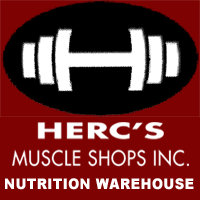Advancements in medicine and an increase in capitalism in the world as well as other factors all contributed to the development of the field of sports nutrition.
As scientists learned more and more about our bodies and the optimum level of strength and physical fitness they can harbor, businessmen jumped the gun and manufactured products and services that actually help athletes meet these optimum levels. The media joined in the ruckus and published materials leading to the promotion of both the scientific and the commercial side of the field.
Sports nutrition has been changing through the years around the world. It's not just that the topics are different – the emphasis and approach have also changed.
Today, go into almost any supermarket, convenience stores and even school cafeterias and you'll find a ready supply of sports drinks aimed at maintaining hydration just like glucose solutions.
The difference is that by using soluble long-chain glucose polymers instead of simple glucose, it's now possible to create an isotonic hydrating drink which also supplies significant amounts of carbohydrate to working muscles. And, the good thing is, sports drinks also taste better.
More than 10 years ago, it was made public that muscle damage brought about by free-radicals may be reduced by having supplements of antioxidant vitamins A, C and E. Years after, antioxidant supplementation became a norm in the world of sports nutrition.
Now, researchers are also beginning to understand that muscle damage is a more complex subject. It is difficult to assess free radical damage in athletes and it has been found out that large amounts of antioxidant nutrients may actually cause cellular damage and impair performance.
The "Carbo loading" technique has been widely used over the years by athletes all over the world. A carbohydrate-rich diet is important in maintaining muscle glycogen stores thus ensuring high endurance levels.
However, in the 1990's it became clear that the 'glycaemic index' and release rate of different carbohydrates had important influence on when they should best be consumed in relation to physical activity.
The relationship of carbohydrates and proteins were also discovered namely that carbohydrates promote protein-sparing in the body. It was also discovered recently that consuming carbohydrates before and during prolonged bouts of strenuous exercise can help protect the immune system.
One of the most exciting recent developments in sports nutrition has been the rise of creatine supplementation. The use of creatine is now very common. Creatine renews the muscles essential energy source, ATP or adenosine triphosphate. Increased levels in muscles optimizes energy turnover meaning you'll more energy for high power exercise and faster recovery during and after workouts.
Nutritional supplements available to most athletes in the 80's were very straightforward. Some athletes took drugs but the boundaries between nutritional supplements and drugs clear. Today, the race to find new formulas to boost performance has resulted to the availability of sports nutrition supplements which do not really occur naturally. The result is that the distinction between a nutrient and a performance-enhancing substance has become increasingly blurred.
Some of these supplements contain ingredients that can cause athletes to violate the rules and regulations governing their sport because of unintentional contamination by other, 'exotic', substances present in the supplement manufacturing environment.
More developments will be created in the world of sports nutrition and these will definitely spawn ethical questions.









